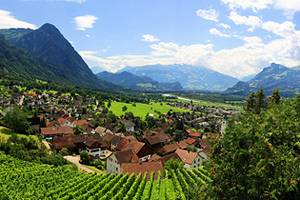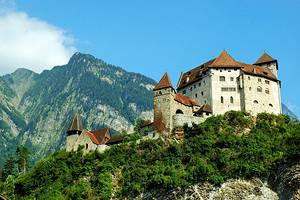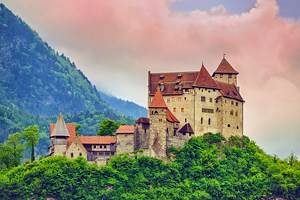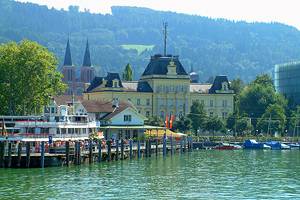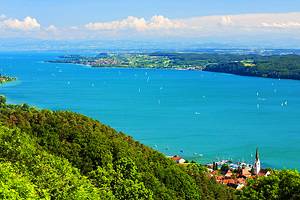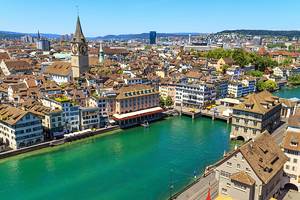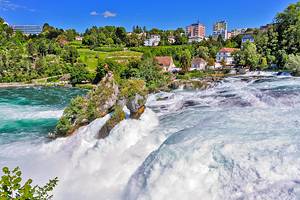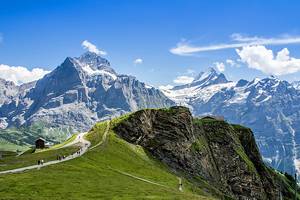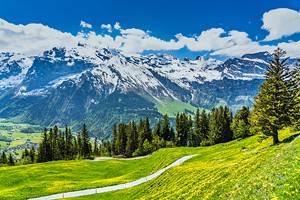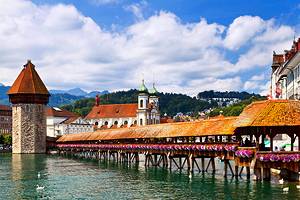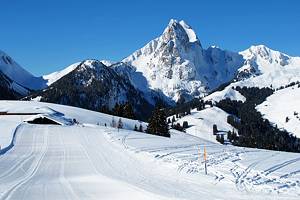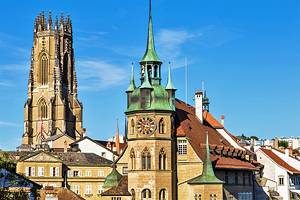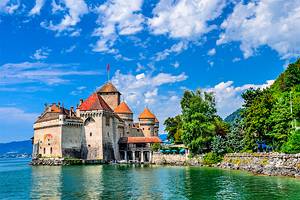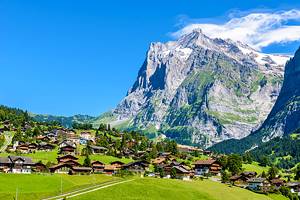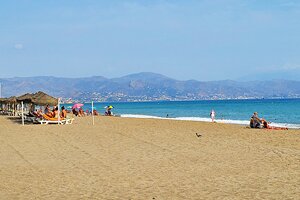19 Most Charming Towns in Europe
From the Norwegian fjords to Italy's island of Sardinia, certain towns have an almost indefinable charm that enchants tourists and beckons them to linger. Along with attractions, these towns have real character, a sense of place, and a welcoming feel that is irresistible.
Some of these charming towns you'll have heard of, but some are hidden secrets that few foreign travelers have discovered. They vary in size from tiny villages to larger towns with all the charm of a village. Although the towns themselves are the attraction, each of these offers plenty of things to do for tourists.
When you are looking for the most beautiful places to visit, plan your sightseeing using our list of the most charming towns in Europe.
- 1. Esslingen, Germany
- 2. Lucca, Italy
- 3. Marvão, Portugal
- 4. Stein am Rhein, Switzerland
- 5. Ålesund, Norway
- 6. Girthoorn, Netherlands
- 7. Najac, France
- 8. Hallstatt, Austria
- 9. Sintra, Portugal
- 10. Volterra, Italy
- 11. Honfleur, France
- 12. Český Krumlov, Czech Republic
- 13. Winchester, England
- 14. Wismar, Germany
- 15. Laguardia, Spain
- 16. Bourton-on-the-Water, England
- 17. Bosa, Sardinia
- 18. Locronan, France
- 19. Annaberg-Buchholz
- Map of Most Charming Towns in Europe
1. Esslingen, Germany
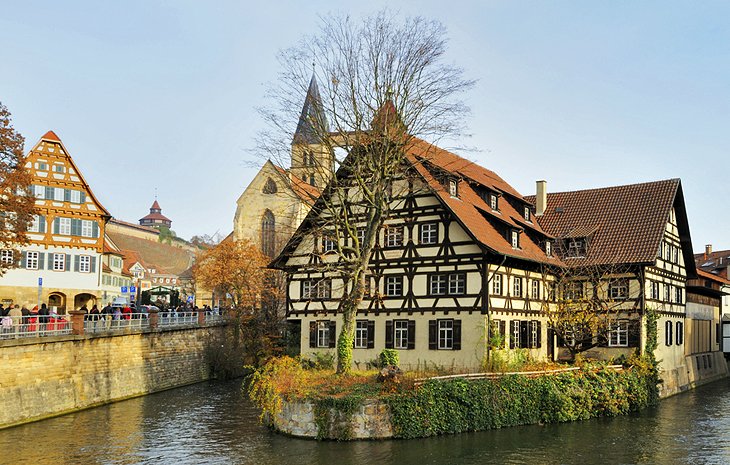
One of southwest Germany's many half-timbered towns, Esslingen secured its position as a major trading center by building two bridges over the Neckar River, making it an obvious crossing point for medieval traders. More than 200 timber-framed buildings from the 13th to 16th centuries lie in Esslingen's Old Town, lining its scenic canals and surrounding the market square.
These form a magical backdrop for Germany's most atmospheric Christmas market, when 200 tradesmen gather, dressed in medieval costumes, to sell authentic crafts from the Middle Ages: pewterware, blown glass, wool, wrought iron, wood carving, and leather work are traded amid entertainment by period minstrels and jugglers.
But visit in any season to stroll its narrow streets, admire historic churches, and sample its many bakeries.
Read More: Best Small Towns in Germany
2. Lucca, Italy
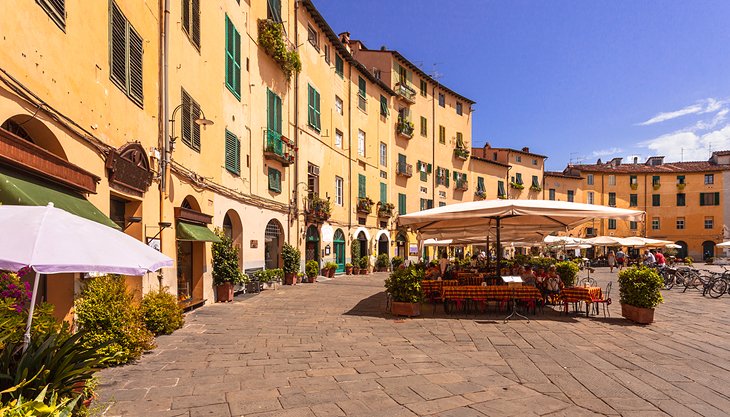
Despite being home to some of Tuscany's most fabulous medieval churches, as well as towers, and priceless art treasures, Lucca's biggest attraction to tourists is that it's just fun to be here.
Yes, the carved and inlaid marble of San Michele in Foro's façade is breathtaking, as are the works of art in the cathedral, and it's fun to climb the soaring Guinigi Tower for a bird's-eye view. But where else will you find a garden with trees at the top of a medieval tower, or a peaceful shaded promenade atop the walls that surround the town?
Claim a café table inside the oval piazza and ponder the lemon-yellow buildings that were constructed out of the walls of a Roman arena that stood there. You enter the piazza through tunnels that once admitted spectators. If the whole town seems like a set for a Puccini opera, it's no wonder - Lucca was his hometown.
3. Marvão, Portugal
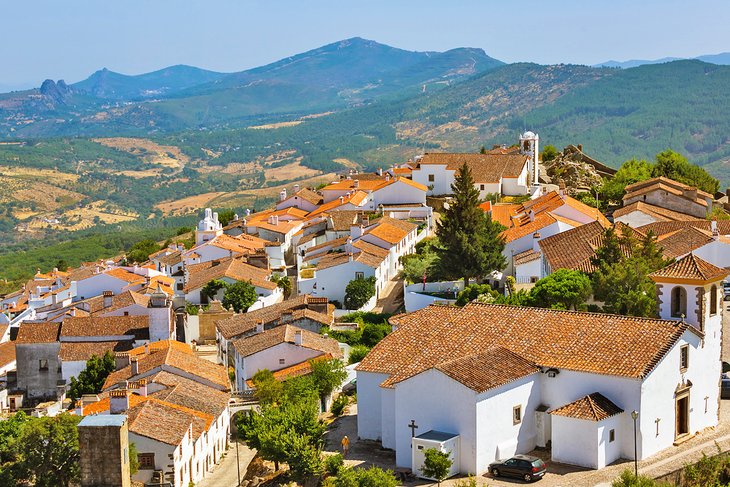
One of the several castellated hill towns that have long kept a watchful eye over Portugal's border with Spain, Marvão is the most dramatic and one of the best preserved. The entire village, which sits atop a steep escarpment, is enclosed by walls and entered through a single gate.
The castle, whose origins date back to the Moorish occupation, sits at the pinnacle, overlooking a parish church and narrow streets of low, whitewashed houses. Walk the well-preserved ramparts for far-reaching views and to appreciate Marvão's lonely position at the frontier.
The area's history goes back long before the castle - in the valley below are the excavated remains of a Roman town.
4. Stein am Rhein, Switzerland
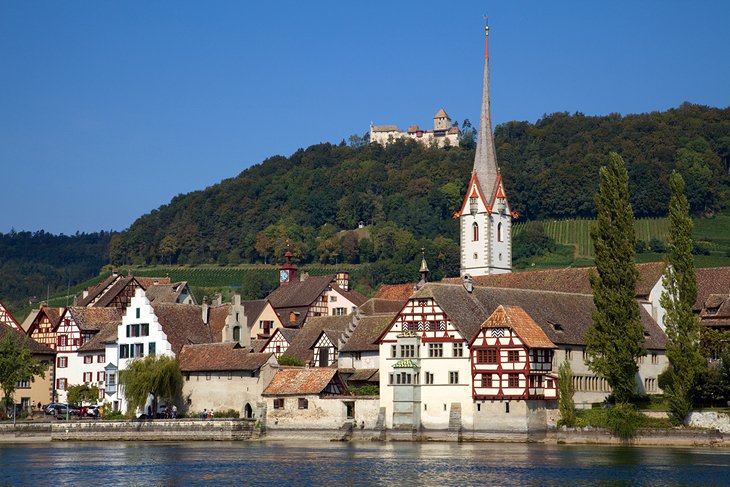
The combination of well-kept half-timbered buildings and the colorful frescoes painted on their facades makes the main street of Stein am Rhein look almost like a stage set for Hansel and Gretel. But along with being among the most beautiful villages in Europe, it's a real town, and the medieval architecture is original.
More timber-frame buildings rim the Rhine, on whose banks the town stretches so picturesquely. For an overview - literally, as it sits high above the town - visit Hohenklingen Castle, built in 1225 and now a museum of local history.
Another museum is in the former Benedictine abbey, founded in the 11th century, but the entire town is pure eye candy.
5. Ålesund, Norway
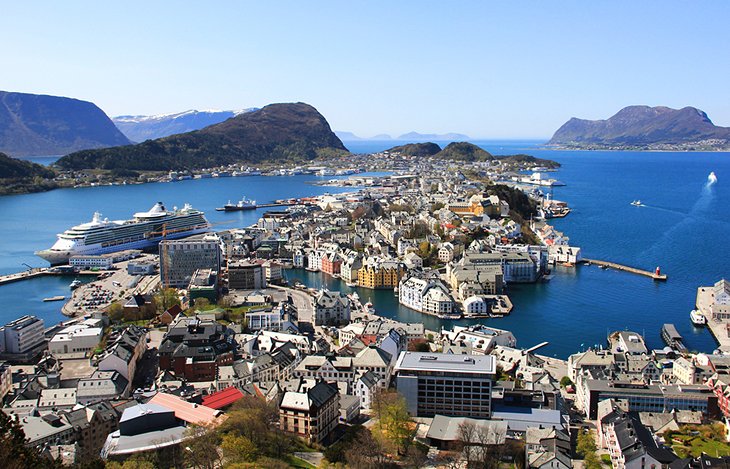
When a devastating fire consumed the entire port town of Ålesund in 1904, the tragedy was redeemed by the combination of an economic depression and a new exciting artistic and architectural movement that was sweeping across Europe. So Ålesund offered work to the newest - and unemployed - architects fresh from their studies.
The result is Europe's only entirely Art Nouveau town, filled not with the excessive flourishes of late Art Nouveau, but graceful Nordic interpretations of the early movement. The setting on two islands at the end of a mountain-ringed fjord perfects the scene and adds an away-from-it-all geniality.
Locals stop to point out some whimsical detail you might have missed, and in the waterside restaurants, chefs work wonders with the seafood from native waters. The excellent museum explores the history, art, and architecture, and gives a look inside an Art Nouveau house.
6. Girthoorn, Netherlands
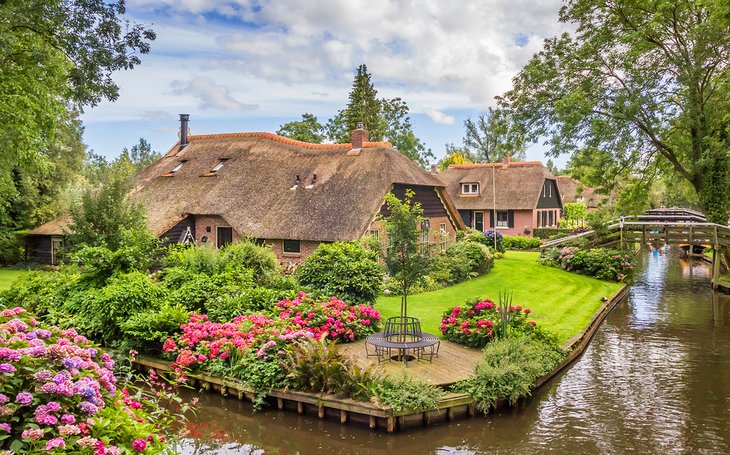
Canals, walking paths, and bike trails are the streets of this tiny Dutch town of thatch-roofed farmhouses. More than 150 wooden bridges arch across the canals to connect the trails, and the favorite way for tourists to see the town and its beautiful gardens is on foot or on a boat tour. Or paddle a canoe through the nearly 100 kilometers of canals that meander among the peat islands.
It was peat that formed the town: peat harvesting left ponds, and farmers built their homes on the islands between them. Favorite things to do here include taking a ride in a traditional punter - narrow boats propelled with long poles - and enjoying lunch in a canal-side café.
7. Najac, France
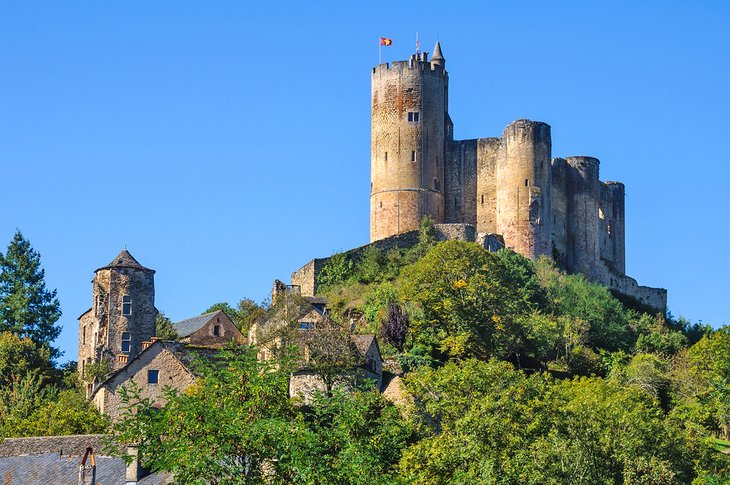
Small and out of the way in the Midi-Pyrénées region of southern France, Najac lines a single street atop a long ridge of rocks that ends at a 13th-century château. Part of a chain of these royal bastions along the Aveyron valley, this one once held Knights Templars in its dungeon after the order was outlawed in 1307.
Churches and chapels from the 13th and 14th centuries; a fortified gate; the arcaded 15th-century Place du Barry; and the beautiful Fontaine des Consuls, a fountain dating to 1344, are the highlights. But you will want to walk the entire length of Narjac and tour the secret passages of the castle.
8. Hallstatt, Austria
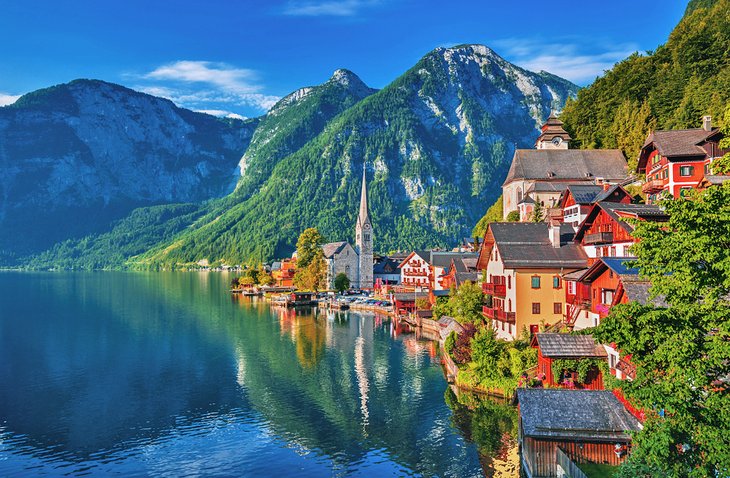
The combination of an Alpine village center of traditional houses with flower-draped balconies, set against the stage-set panorama of mountains reflected in a clear lake makes Hallstätt a photographer's dream. The idyllic village and lake, the 8.5-kilometer Hallstätter See, are included in the Hallstatt-Dachstein/Salzkammergut Alpine UNESCO World Heritage Site.
For the best view of the village and its setting, walk to the Römisches district, not far from the Marktplatz, a pretty square surrounded by cafés and shops. The view of the town is punctuated by the tall, graceful spire of the 19th-century Evangelical Church. For another view of the village, lake, and mountains, climb to the 15th-century Roman Catholic Ascension of Our Lady Church. Step inside to see the three beautiful winged altars and Late Gothic frescos.
Apart from snapping photos at every turn, the most popular things to do in Hallstatt are taking a boat ride on the lake, touring the salt caves, or hikes to the waterfalls in the hills behind Hallstatt. Those with a head for heights can get a bird's-eye view of the rooftops from the new glass Skywalk platform.
9. Sintra, Portugal
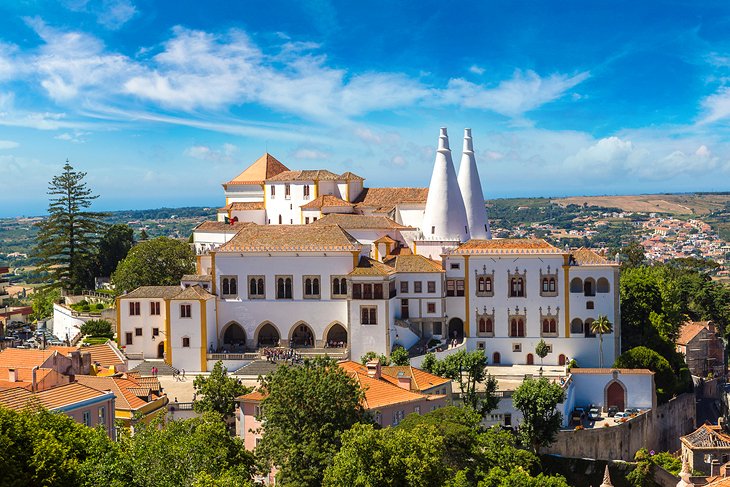
A short train ride and easy day trip from Lisbon, Sintra is not a quaint little Portuguese village. Instead, there's a fairy-tale charm, a sense that you've stepped out of the real world and into a castle, palace, or garden, where elves might pop out of a camellia blossom or nymphs swim in the fountains.
Castles and palaces seem to be everywhere, one more fantastic than the next, and all set in lush tropical gardens that spill down the steep hillsides. Five are open to tour, ranging from a genuine medieval fortress and two royal palaces (one a multicolored and turreted Victorian confection) to an extravagant Moorish folly and a faux Knights Templar fantasy.
You can't help being swept up in its almost make-believe spirit and charmed by its glorious gardens.
Read More:
10. Volterra, Italy
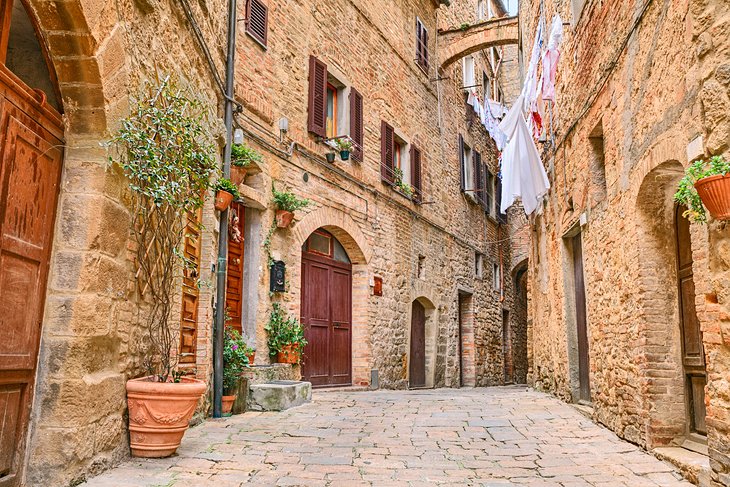
It's hard to choose between Tuscany's medieval hilltop towns, and most tourists plan to visit more than one. But Volterra is not visited as often as San Gimignano and some of the others, so it's a better place to savor local life and enjoy its top things to do without lines.
Along with the atmospheric old stone streets and companionable little squares, you'll find the whole range of Tuscan sights: significant Etruscan and Roman remains; 12th- and 13th-century medieval tower houses; Renaissance art; and a 19th-century palace resplendent in carved alabaster, the local artisan specialty. It's easy to see why it's invariably listed as one of the best old towns in Europe.
11. Honfleur, France
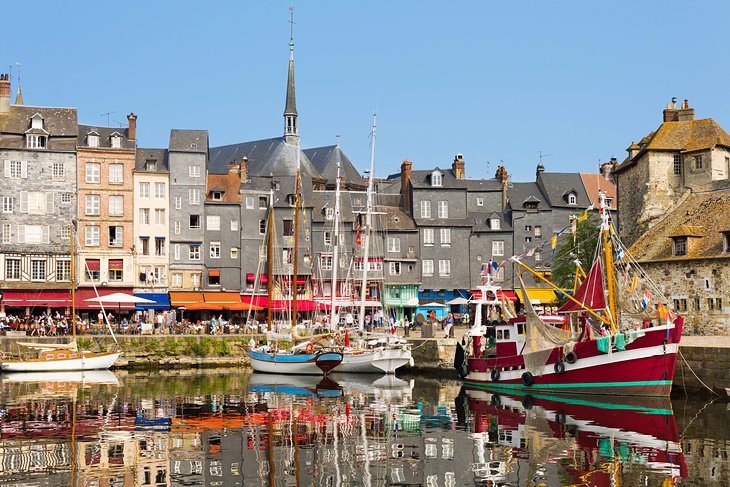
The bustle of boats in its fishing harbor and the random mix of stone, half-timbered, and pastel stucco house fronts just add to the happy-go-lucky air of this Normandy seaport. Samuel de Champlain sailed from here to explore the New World, and the Musée de la Marine delves into the port's long seafaring and shipbuilding history.
The art museum shows 200 works by Impressionist Eugène Boudin and his contemporaries Monet, Courbet, Millet, and others. Stop in to admire the ceiling of the Late Gothic Church of Sainte-Catherine, built by local shipwrights, then linger for ice cream and enjoy the scene.
12. Český Krumlov, Czech Republic
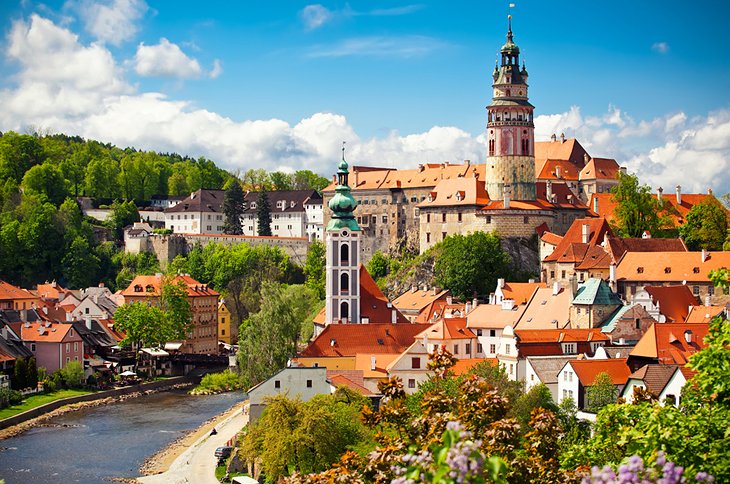
Although it's really a city, Český Krumlov's beautifully preserved Old Town is a village of its own, cosseted inside its walls and caught in the curve of the Vltava River. Almost hidden beneath the steeply gabled roofs is a maze of narrow stone-paved streets surrounding the 13th-century castle.
Like the town itself, this medieval complex shows styles from the Gothic, Renaissance, and Baroque eras. The entire center has been named a UNESCO World Heritage Site. After visiting the castle, the Church of St. Vitus, and the Minorite Monastery, stroll through the old streets, and view the town from the river, on a boat ride.
While it's worth spending some time here, you can visit Český Krumlov on a day trip from Prague.
Read More:
13. Winchester, England
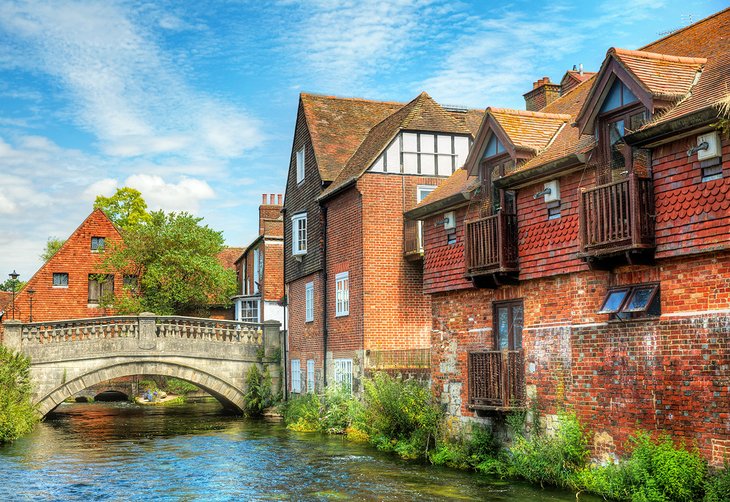
The unspoiled cathedral town of Winchester rings with history. It was the capital of England from Anglo-Saxon times until the 13th century and the seat of Alfred the Great. You can see his tomb in the 11th-century Winchester Cathedral, where William the Conqueror was crowned.
The cathedral is filled with architectural and artistic highlights - late-Gothic fan vaulting, the magnificent 11th-century wrought iron Pilgrim's Gate, 12th- and 13th-century wall paintings, and 16th-century murals in the Lady Chapel.
There are ruins of the royal castle, the bishop's palace, and the gardens of an abbey founded by King Alfred's queen, but take time to savor the town itself, stopping in the tearooms and shops and following the River Itchen past ancient buildings and quiet gardens.
- Read More: Top-Rated Tourist Attractions in Winchester
14. Wismar, Germany
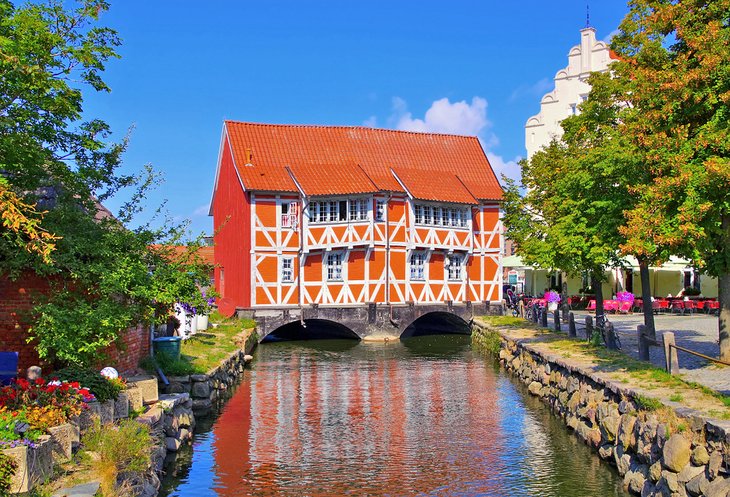
This historic Baltic seaport, once part of the powerful Hanseatic League of trading cities, retains so much of its medieval center and harbor that it has been named a UNESCO World Heritage Site for its well-preserved Hansa architecture.
A stroll through its winding streets reveals half-timbered houses; characteristic stair-step gabled facades; the fascinating medieval Church of the Holy Ghost; and a pair of mammoth brick churches - the 36-meter-tall nave of St. Nicholas, built in 1381, is among the tallest of these Gothic giants found along Germany's north coast.
Wismar's harbor looks much as it did in Hansa times, and you can often see the single-masted sailing ship Wissemara, a replica of a traditional Hansa kogge. In good weather, join locals for lunch at the port, where fishing boats sell fischbrötchen – crusty rolls filled with marinated herring, lox, or smoked salmon.
15. Laguardia, Spain
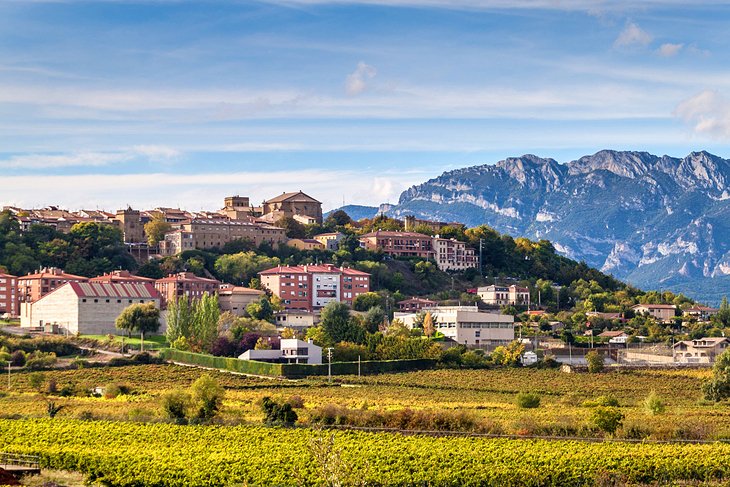
Rising above the Rioja, south of Bilbao, Laguardia sits at the top of a hill, its tightly packed stone buildings enclosed by massive stone walls. During its tumultuous medieval past, the rock beneath it was carved into a maze of tunnels for shelter and escape routes when the town was under attack. Today, some of these tunnels house shops and cozy cafés beneath the medieval buildings that line the narrow stone streets.
You can climb the route followed by medieval pilgrims on the Way of St. James, from the Romanesque church of San Juan Bautista up to the crest of the village and the church of Santa María de los Reyes. Look just inside to see the painted stone carvings of the magnificent original portal, one of the finest Gothic portals in Spain.
Follow the walls around the church for views of the valley below and the Sierra de Cantabria mountain range behind it.
16. Bourton-on-the-Water, England
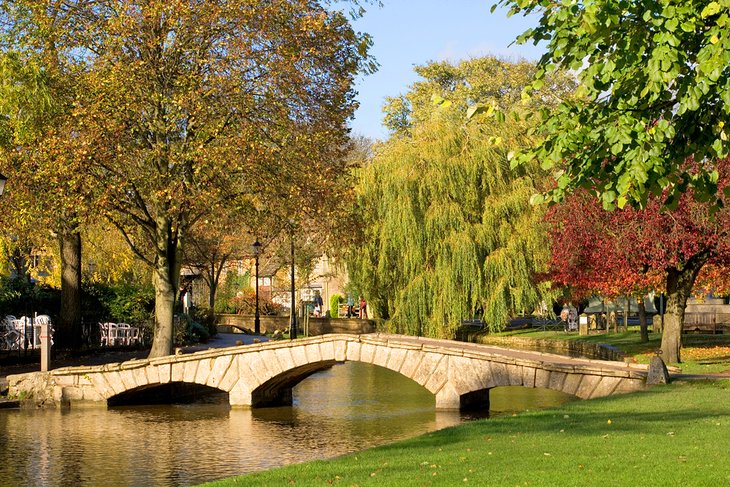
The River Windrush is only about 35 miles long, but it gives the village of Bourton-on-the-Water both its name and its unbeatable charm. Five arched bridges, made of local Cotswold stones, cross the river and date from as far back as 1654.
The streets and lanes of this "Venice of the Cotswolds" are lined by honey-colored houses of weathered stone with gabled slate roofs. And if this idyllic village doesn't inspire enough photos, it is repeated in flawless miniature at the Model Village. This one-ninth-scale replica of the village center and its bridges is eye-tricking, even to the size of the trees along its streets and a tiny working waterwheel.
Benches line the banks of the Windrush, and its grassy verges are favorites on summer days, but Bourton-on-the-Water has more things to do besides admire the riverside and bridges.
Along with the Model Village, built by local craftsmen to honor the Coronation of 1937, you can stroll the wildflower meadows at Greystones. Managed by the Gloucestershire Wildlife Trust, Greystones also includes Iron Age ramparts and a replica of an Iron Age roundhouse. Children will enjoy the interactive Discovery Barn at Greystones' organic farm. Admission is free.
Despite its picturesque charms, Bourton-on-the-Water doesn't feel like a theme park, and is alive with village residents and their children enjoying the riverbanks and waterside restaurants.
17. Bosa, Sardinia
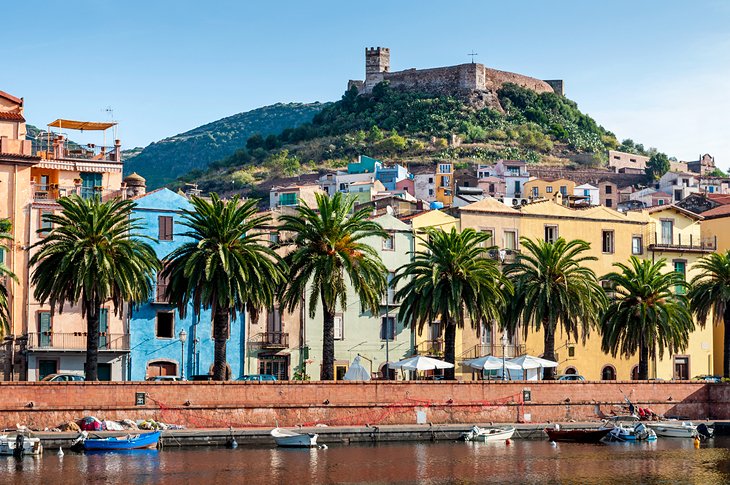
Bosa rises from a line of pastel houses along the palm-lined riverbank, through a tangle of medieval lanes and passageways to the 12th-century Malaspina Castle high above. The narrow main street is lined by noble palazzi, now housing shops, galleries, and a museum.
Do climb through the warren of little streets, stairs, and tiny squares for a feel of this remote town a millennia ago, and marvel at the unusual 14th-century frescoes in the castle's chapel.
For breathtaking views, follow the coast north from Bosa to Alghero, a larger but equally captivating town that hints at its Spanish past. This western coast of Sardinia is light years away from the glitz of the better-known Costa Smeralda.
18. Locronan, France
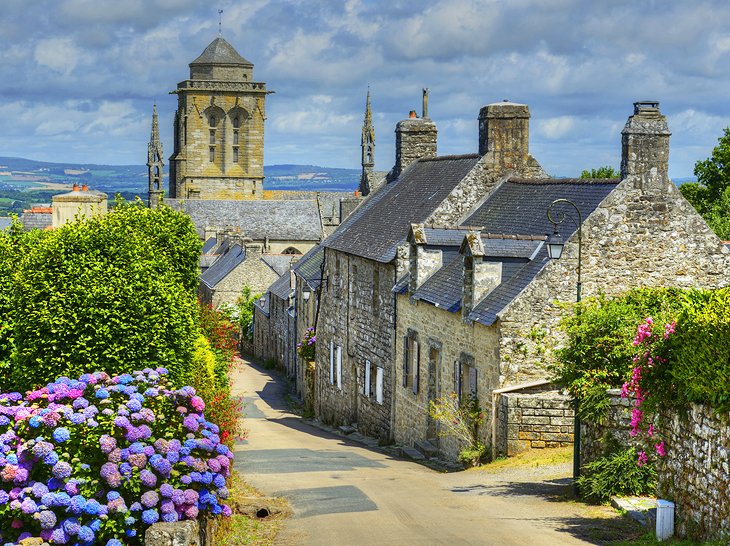
The medieval stone town of Locronan sits between two peninsulas in Brittany's west Finistère, close to some of the most beautiful Atlantic beaches. Medieval buildings mix with 18th-century manor houses, and the town is the scene of a traditional Breton pilgrimage festival known as the Grande Troménie pardon, held every six years.
The nearby Chapelle Sainte-Anne-la-Palud is an important pilgrimage site, where the faithful venerate a statue of Saint Anne. The village of Locronan has shops and studios showing the works of local artisans, and the area is known for its excellent seafood.
19. Annaberg-Buchholz
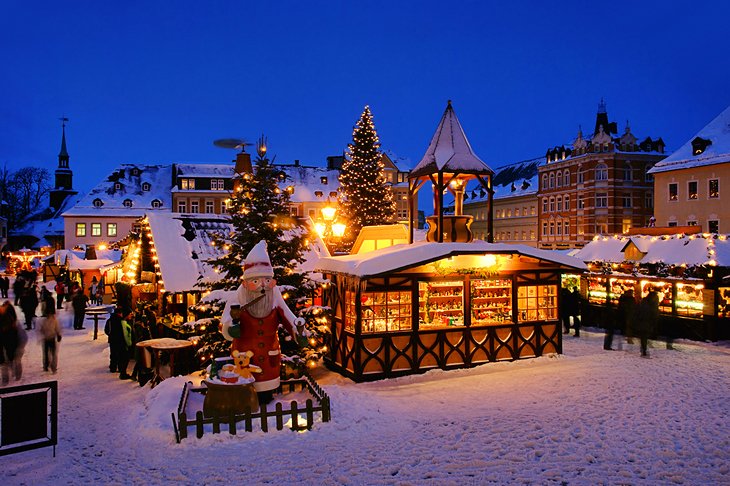
More than any other, Annaberg-Buchholz is Germany's Christmas town. Set in the steep slopes of the Ore Mountains - the country's center for wood carving - Annaberg-Buchholz and its surrounding communities are responsible for most of the wooden Christmas decorations associated with the holidays.
From tiny pink-cheeked wooden angels to scowling nutcrackers to tabletop carousels that twirl from the heat of a single candle, if you find them at a German Christmas market, it's a good bet they came from here.
But Annaberg-Buchholz and its wood-carving traditions are not just about Christmas. Its churches are alive with magnificent carved altars, pulpits, paneling, ceilings, and lifelike statues, and shop windows are filled with wood-carvers' art. Hidden in a deep vale below the compact town center is a medieval hammer mill, its giant wooden gears still powered by a meandering brook.


